July 24, 2025
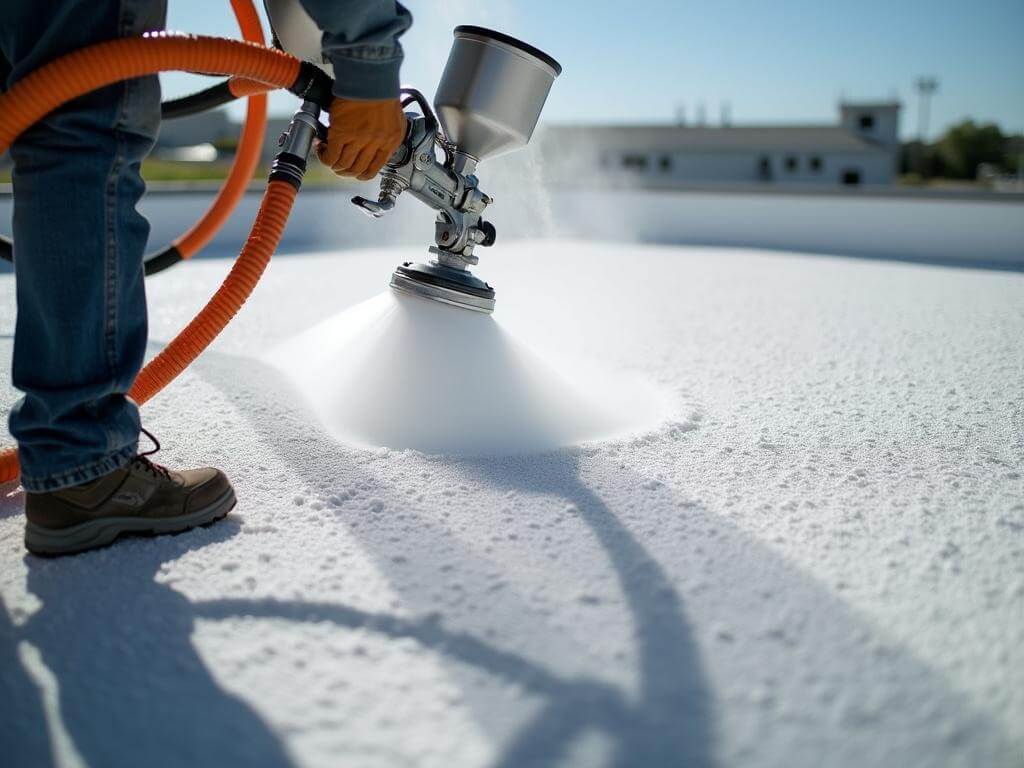
If you’re wondering whether spray foam roofing is a gimmick or the secret weapon your roof has been waiting for—you’re not alone.
One of the most common questions I get from commercial building owners and homeowners is, “Is it really worth the hype?” Quick answer: yes. Long answer? Keep reading.
Let’s start by understanding what this magic foam actually is… and why it might be the most underrated roof upgrade out there.
Spray foam roofing (aka spray polyurethane foam or SPF) is a high-performance roofing system.
Instead of rolling out sheets and sealing seams, professionals use a spray gun to apply a liquid that expands into a thick, solid foam, sticking directly to your existing roof.
It cures quickly, bonds tight, and once topped with a UV-resistant coating—becomes a waterproof, insulating, seamless membrane.
Perfect for flat or low-sloped commercial and residential roofs? Absolutely.
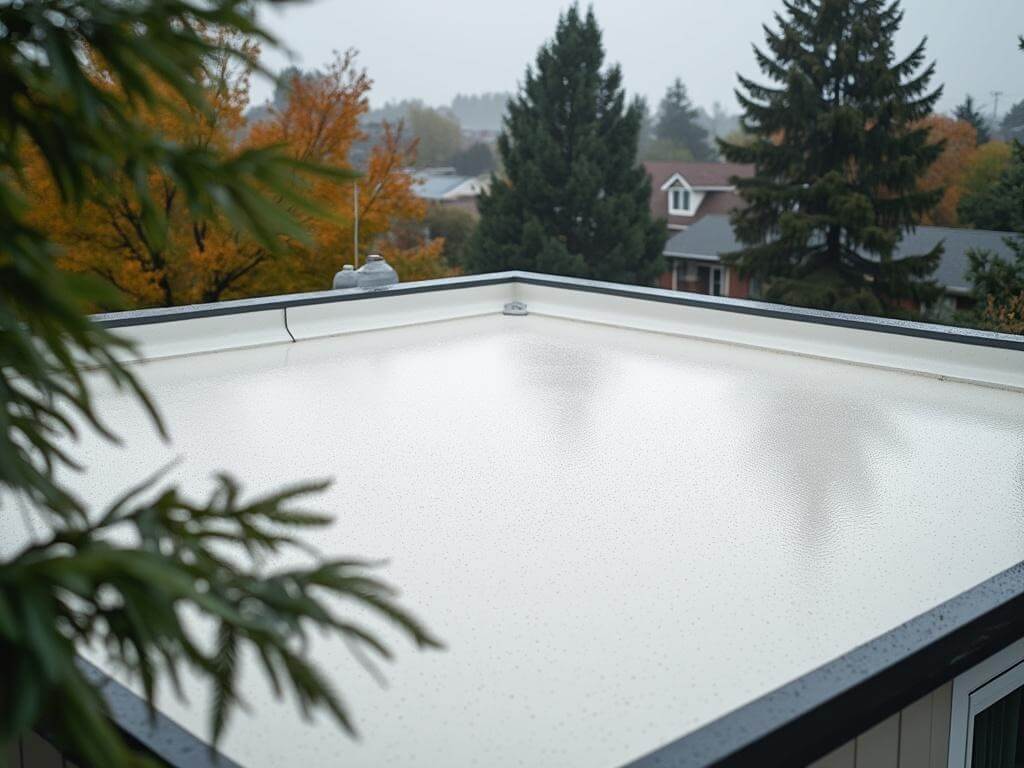
Climate plays a huge role here.
In a moisture-heavy area like Corvallis? You’re battling rain nearly half the year.
Concrete and tar roofing systems don’t always hold up. But a seamless spray foam barrier? Fewer entry points for leaks and a natural solution to pooling water.
Plus, with Oregon pushing more energy efficiency initiatives and regulations each year, systems like spray foam are getting extra attention for their ability to slash energy costs.
Key takeaway:
Spray foam roofing isn’t just modern—it’s strategic. Especially for property owners facing tough weather and heating bills.
Most people hear “spray foam” and think of wall insulation. Same family—different function.
Here’s what’s actually going on with a spray foam roof setup:
What’s that mean in plain English?
It means you get a roof with no seams, no joints, and no easy failure points.
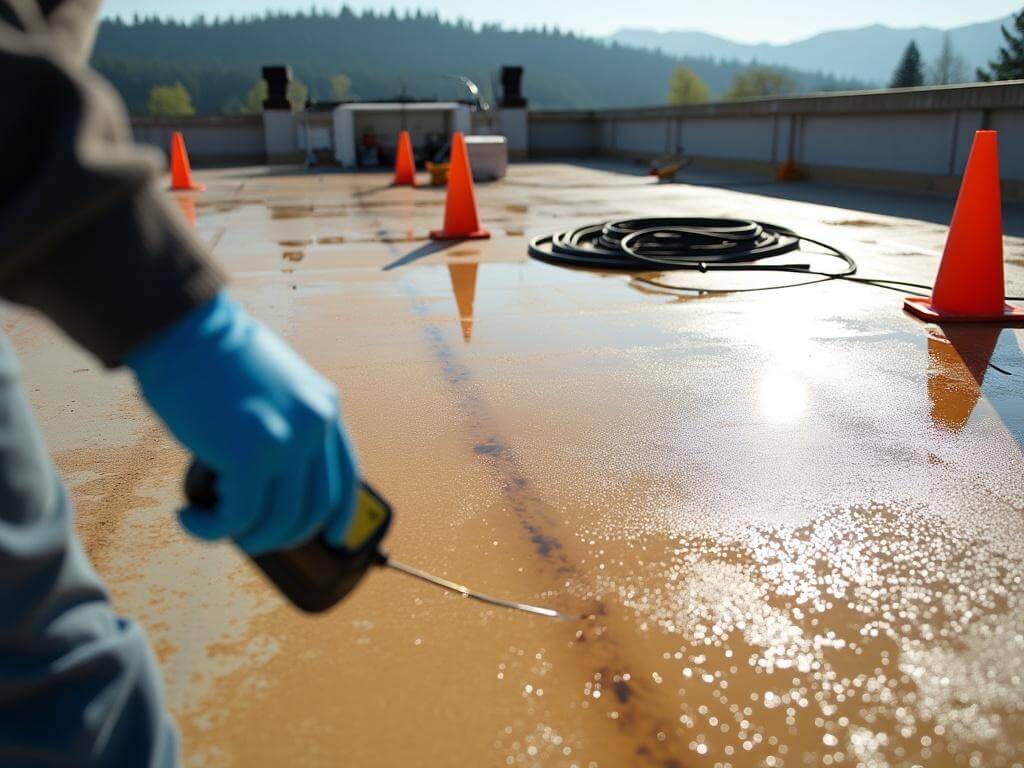
Quick note: foam needs to be applied to a clean, dry surface. That means the roof gets pressure washed, inspected, and prepped before application.
Any questionable or saturated areas? Cut out and replaced before spraying begins.
We’re talking a full roof transformation in a surprisingly short time… sometimes within days.
One thing I learned early on: prep matters. I once showed up to a site in late spring after a week of off-and-on rain, and we had to delay because the roof wasn’t completely dry. Could’ve pushed forward, but I knew that rushing it would compromise adhesion—and set the client up for problems later.
Key takeaway:
Spray foam isn’t just sprayed and done. The layers, coatings, and prep all play critical roles. But when done right? It’s airtight, watertight, and built to last.
“Is spray foam roofing worth it?”
Short answer? If you care about insulation, waterproofing, and longevity—yes. Big yes.
Here’s what makes it a smart move:
SPF has an impressive R-value—about 6.5 per inch.
That means it’s great at holding heat inside during winter and keeping it out during summer.
In places like Corvallis where winters are cold and damp, you’ll feel the difference (and likely see it in your HVAC bills, too).
Most roof leaks start at seams, fasteners, or penetrations.
Spray foam roofing literally has none of those. It forms one continual sealed layer with zero joints.
Even better, it expands into cracks and awkward spaces during application, so it catches the spots many systems miss.
SPF is lighter than pretty much every other type of flat roofing.
That matters when you're doing a replacement or retrofit. Many buildings can’t handle extra roof weight without reinforcement—but spray foam usually adds only a couple of pounds per square foot.
Less structural stress = fewer engineering headaches = better long-term stability.
Traditional roofs eventually have to be torn off and rebuilt.
With spray foam? After 10–20 years, you simply clean the surface and apply new coating.
The result: a refreshed, watertight roof without demolition.
Spray foam can usually be applied right over the existing roof, saving time and waste.
No loud tear-off. No dumpster clutter. Less interruption for building occupants or tenants.
SPF reduces your energy needs, sends almost zero old materials to landfills, and extends roof life dramatically.
If you’re aiming for green certifications or just want to do the right thing environmentally—this is a no-brainer.
Key takeaway: Spray foam roofing isn’t just about roof protection. It’s about better building performance across the board.
Nothing is perfect, and spray foam roofing is no exception.
Before you start planning your install date, keep these five potential challenges in mind:
SPF depends heavily on technique.
Foam ratios, spray temperature, coating volumes—all need to be right. A mistake in any one stage can cut years off your roof life.
That’s why I only recommend contractors who specialize in SPF—not generalists who “also do spray foam.”
Foam hates two things: rain and low temps.
If it’s below 50°F or raining, it can’t be applied. That means your spray window is usually spring through early fall—especially here in the Pacific Northwest.
The foam itself is strong—but not indestructible.
Heavy impact, dropped tools, or long-term ponding water can expose the foam layer. That’s why the elastomeric topcoat is vital, and why periodic inspections matter.
Plan on:
Put it off too long and you might lose the renewability upside.
The foam’s fine particles can drift in the wind and land where they shouldn’t—windows, cars, other buildings.
That’s exactly why pro installers use wind screens, controlled rigs, and apply during the right conditions only.
Key takeaway:
Spray foam is a performance-driven system. Get a good installer, follow a basic maintenance routine, and you unlock 20+ years of stress-free weather protection.
Let’s look at where it’s used most effectively…
Coming up next: real-world use cases, comparisons with other roofing systems, and how it holds up specifically in Corvallis’s wet and temperate climate.
Let’s talk about where spray foam roofing doesn’t just perform—it dominates.
If you’re managing a property in a moisture-prone or temperature-variable area, like Corvallis? SPF isn’t a theoretical solution. It’s battle-tested.
One commercial property manager I worked with had an aging office building just outside downtown Corvallis. Flat roof, multiple HVAC penetrations, tons of existing patch jobs that never really held up.
During winter, the tenants were constantly reporting ceiling stains and fluctuating interior temps.
They were skeptical about spray foam at first—not because it didn’t sound good, but because it sounded too good.
We foam-sprayed directly over the existing system in early summer.
Fast-forward six months: no leaks during rainy season, indoor temperatures held steady without cranking the HVAC, and their utility bills dipped hard by fall—more than 25% lower year-over-year.
No seams. No failure points. Just protection that works.
That building is still going strong seven years later—and all we’ve done is one routine inspection and a minor touch-up near a replaced vent.
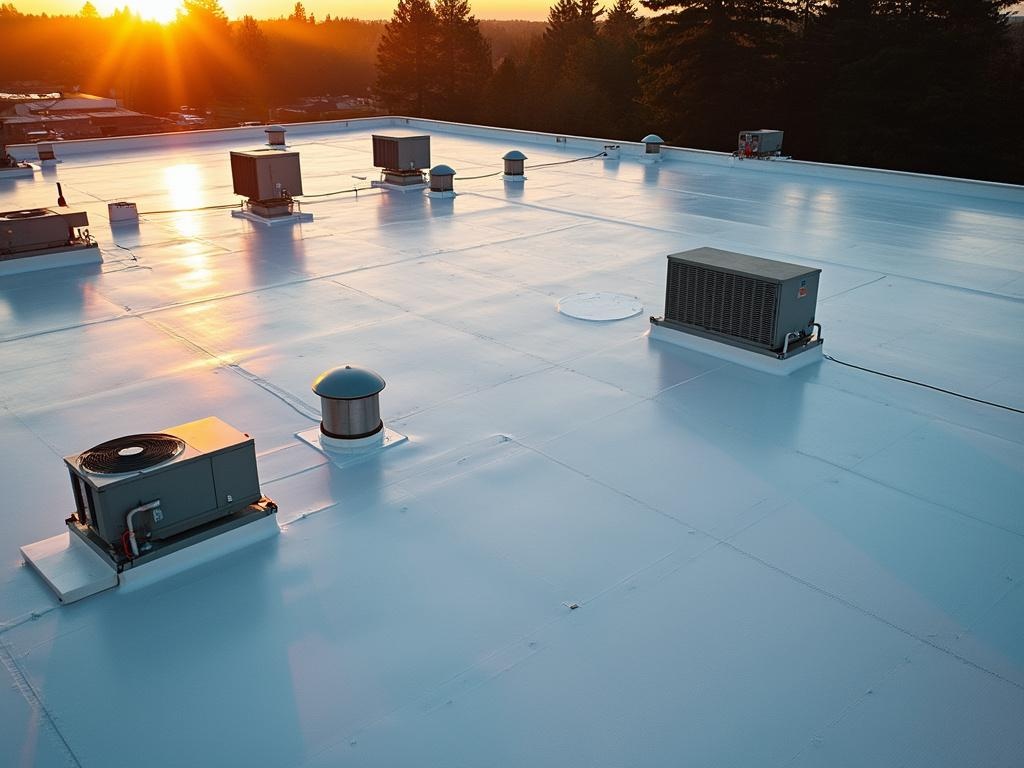
You probably know that most commercial roofs are replaced not because the waterproofing fails instantaneously—but because of one weak spot that caused hidden damage over time.
SPF doesn’t give water a chance to sneak in.
Key takeaway:
If you manage multi-unit properties, own a commercial space, or just need a better long-term shield from PNW weather—spray foam roofing earns its keep.
You’ve got options—TPO, EPDM, metal, built-up.
But none of them do everything spray foam does in one go.
Don’t just take my word for it. Let’s compare.
Now, I’ve installed, repaired, or evaluated all of these in roofing projects across Oregon and Washington.
Every system has its place.
But time and again, for flat roofs—especially those with aging systems already in place—spray foam roofing is the most complete package.
Key takeaway:
If you want the trifecta—thermal insulation, waterproofing, and low disruption—SPF outruns its rivals. And it’s not even a close race.
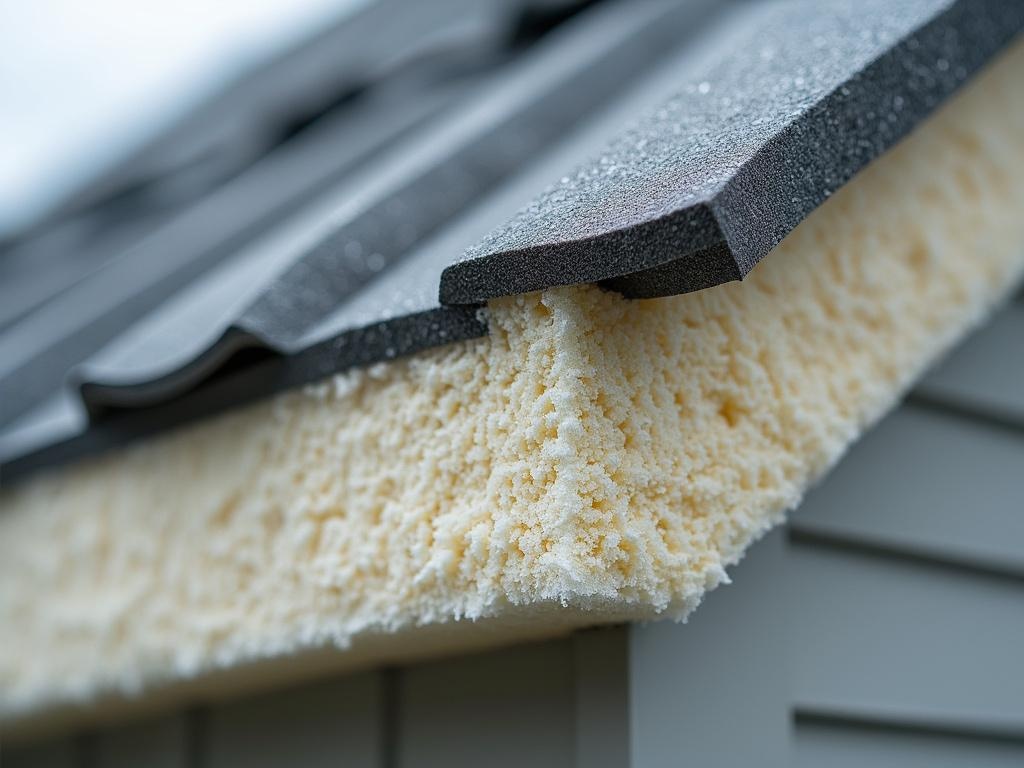
Corvallis isn’t just “rainy.”
It’s persistent-moisture, moss-loving, chill wind rainy.
So, how does spray foam roofing stack up for these conditions?
Better than you’d think.
The elastomeric topcoats (usually silicone for our region) shrug off UV exposure and wet/dry cycling, making it an ideal barrier in the Willamette Valley where weather swings hard within a week.
And here’s a game-changer for many local property owners:
Oregon’s push for energy-efficient systems means spray foam checks boxes for long-term sustainability, insulation credits, and green building objectives.
Local clients love that the system supports their values: renewable, repairable, less waste.
Bonus: no noisy tear-offs disrupting business hours or residential tenants.
Key takeaway:
In a place where weather stress tests every inch of your roof, spray foam has proven it can keep up—and stay ahead.
In most cases, no. If the current structure is sound and dry, spray foam can go right over it.
Not at all. Here’s the real story:
That’s far better than needing constant checks at vulnerable seams and sealing fasteners every few years.
Yes—with granule-embedded topcoats.
Service walkways or high-traffic zones can be reinforced to handle routine maintenance traffic—like HVAC access.
The closed-cell foam resists compression and rebounds effectively.
But, like any system, hard impact damage should be evaluated.
If something punctures the topcoat through to the foam, it can typically be patched quickly without tearing up the roof.
Key takeaway:
Spray foam isn’t delicate—it’s just different. The maintenance is simple, and the durability is underestimated by many.
If you made it this far, you already know:
Spray foam roofing isn’t hype—it’s smart design that delivers.
It’s not the flashiest option out there. But it’s:
For property owners in Corvallis—dealing with wet winters, mild heatwaves, and rising energy costs—it’s a strategic solution that pays off across all seasons.
And honestly?
In all my years walking roofs, I’ve never seen a traditional system transform aging structures as reliably or affordably over time as SPF.
The buildings stay warmer, drier, and more efficient. The owners sleep better. And the roof? It finally stops being a liability.
So if you're weighing your options, looking for a lasting fix—not just a short-term patch—don't overlook spray foam roofing.
It just might be the smartest move you haven’t made yet.
If you're ready for less stress, lower bills, and fewer leaks, it may be time to call a local expert in spray foam roofing.